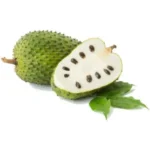Discover the healing properties of Indian Gooseberry (Amla) and its effectiveness in curing various diseases. Explore natural remedies and health benefits today.
The Indian gooseberry, scientifically known as Phyllanthus emblica or Emblica officinalis, is a fruit widely recognized for its medicinal properties. It has been extensively used in traditional systems of medicine, particularly Ayurveda, for centuries. Modern scientific studies have also validated many of its therapeutic benefits. Below is a detailed explanation of the diseases and conditions that Amla can help treat or prevent, based on its bioactive compounds and pharmacological properties.
1. Antioxidant Properties
Amla is one of the richest natural sources of Vitamin C, which plays a crucial role as an antioxidant. It contains other potent antioxidants such as gallic acid, ellagic acid, and flavonoids. These compounds help neutralize free radicals in the body, reducing oxidative stress—a key factor in aging and various chronic diseases.
- Prevention of Chronic Diseases: The antioxidant activity helps protect against cardiovascular diseases, diabetes, neurodegenerative disorders like Alzheimer’s disease, and certain cancers.
- Anti-Aging Effects: By combating oxidative damage at the cellular level, Amla slows down aging processes and promotes longevity.
2. Anti-Cancer Potential
Several preclinical studies have demonstrated that Amla exhibits antineoplastic (anti-cancer) effects due to its phytochemicals such as gallic acid, ellagic acid, corilagin, geraniin, and prodelphinidins B1 and B2.
- Chemopreventive Effects: Amla has shown promise in preventing cancer by scavenging free radicals that can cause DNA damage.
- Radiomodulatory and Chemomodulatory Properties: It enhances the efficacy of chemotherapy while reducing its side effects.
- Immunomodulation: Amla boosts immune responses to fight cancer cells more effectively.
- Specific Cancer Types Studied: Research indicates potential benefits against breast cancer, liver cancer, colon cancer, lung cancer, and skin cancers.
3. Cardioprotective Benefits
Amla has been shown to improve heart health through multiple mechanisms:
- Reduction in Cholesterol Levels: Studies suggest that Amla lowers LDL (bad cholesterol) while increasing HDL (good cholesterol). This effect is attributed to its high antioxidant content.
- Anti-Atherogenic Effects: It prevents the formation of plaques in arteries by reducing lipid peroxidation.
- Blood Pressure Regulation: Amla’s vasodilatory properties help regulate blood pressure levels.
4. Diabetes Management
Amla exhibits anti-diabetic properties due to its ability to enhance insulin secretion and sensitivity:
- Blood Glucose Control: Clinical trials have shown that consuming Amla reduces fasting blood sugar levels in both healthy individuals and patients with type 2 diabetes.
- Reduction in Complications: Its antioxidant properties help mitigate complications associated with diabetes such as neuropathy and nephropathy.
5. Gastroprotective Effects
Amla has been traditionally used to treat digestive disorders due to its gastroprotective properties:
- Treatment of Peptic Ulcers: Studies indicate that Amla reduces gastric acid secretion while promoting mucosal defense mechanisms.
- Relief from Dyspepsia (Indigestion): It acts as a digestive tonic by enhancing enzymatic activity in the stomach.
- Anti-Diarrheal Activity: The fruit’s tannins exhibit antimicrobial effects against pathogens causing diarrhea.
6. Liver Protection
Amla has hepatoprotective effects that safeguard liver function:
- Detoxification Support: It helps detoxify harmful substances from the liver.
- Protection Against Fatty Liver Disease: Regular consumption reduces fat accumulation in liver cells caused by alcohol or high-fat diets.
7. Neuroprotective Properties
The neuroprotective effects of Amla are attributed to its ability to reduce oxidative stress in brain tissues:
- Prevention of Neurodegenerative Disorders: Studies suggest it may lower the risk of Alzheimer’s disease and Parkinson’s disease by protecting neurons from oxidative damage.
8. Immune System Enhancement
Amla strengthens immunity through several mechanisms:
- Its high Vitamin C content boosts white blood cell production.
- Immunomodulatory compounds enhance overall immune response against infections.
9. Skin Health
Amla is widely used for improving skin health due to its antioxidant content:
- Reduces pigmentation issues like melasma or dark spots.
- Promotes collagen synthesis for firmer skin texture.
10. Hair Care
In traditional medicine systems like Ayurveda, Amla is considered a powerful hair tonic:
- Prevents premature graying due to its rich antioxidant profile.
- Strengthens hair roots and promotes growth when applied topically or consumed orally.
Conclusion
Indian gooseberry (Amla) is a versatile medicinal fruit with numerous health benefits supported by both traditional knowledge and modern research. Its therapeutic applications span across various domains including chronic disease prevention (e.g., cardiovascular diseases), treatment support for conditions like diabetes or cancer, enhancement of immunity, protection against oxidative stress-related disorders (e.g., neurodegeneration), digestive health improvement, liver protection, skin rejuvenation, and hair care.
The wide range of bioactive compounds present in Amla—such as Vitamin C, polyphenols (e.g., gallic acid), tannins (e.g., corilagin), flavonoids—contribute significantly to these health-promoting effects. While further clinical trials are needed for some applications (e.g., specific anti-cancer treatments), existing evidence strongly supports incorporating this superfruit into daily diets for preventive healthcare purposes.
Top 3 Authoritative Sources Used:
- European Journal of Cancer Prevention
- This peer-reviewed journal provides comprehensive insights into cancer prevention strategies using natural substances like Phyllanthus emblica. It highlights experimental studies on chemopreventive effects of Amla’s phytochemicals.
- Journal of Ethnopharmacology
- Focuses on ethnobotanical research validating traditional medicinal uses through modern pharmacological studies; includes data on anti-tumor activities of Phyllanthus emblica extracts.
- British Journal of Nutrition
- Offers evidence-based findings on how dietary components like Amla influence metabolic health markers such as cholesterol levels and oxidative stress reduction during aging processes.


